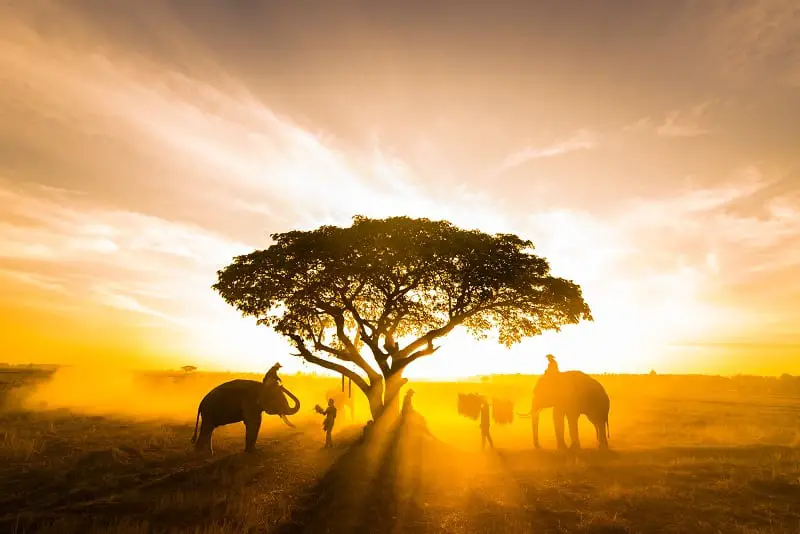The grandeur of the animal kingdom manifests in an unparalleled diversity that stretches across ecosystems and continents. From the colossal blue whales traversing the oceans to the intricate microscopic organisms shaping soil fertility, this kingdom encompasses a staggering array of life forms. In rainforests, savannas, deserts, and polar regions, nature has crafted an astonishing variety of species, each exquisitely adapted to its environment. The vibrant tapestry of biodiversity, with over a million identified species and countless more waiting to be discovered, reveals the intricate web of life that sustains our planet.

Animal Kingdom Adaptations: Nature’s Masterpieces
Nature is a master sculptor, fashioning an assortment of adaptations that epitomize the artistry of evolution. Creatures possess remarkable traits tailored to survival in their respective habitats. Consider the arctic fox, a master of seasonal camouflage, transitioning its coat from brown in summer to white in winter. Similarly, the leaf-tailed gecko’s cryptic appearance, blending seamlessly with tree bark, showcases nature’s ingenious design. These adaptations aren’t just marvels of biology; they represent finely tuned solutions to the challenges of existence, honed over millennia.
Behavioral Marvels in the Animal Kingdom
Beyond physical adaptations, the behavioral intricacies of animals captivate observers. Societies within the animal kingdom unveil astonishing complexities, from the intricate communication systems of prairie dogs to the familial bonds among elephants. The cooperation among social insects like ants and bees, displaying division of labor and coordinated efforts, serves as a testament to the sophistication of their societies. These behaviors are not merely instinctual; they’re also shaped by learning and experience, highlighting the nuanced lives led by different species.
The Enigma of Animal Intelligence
Intelligence among animals spans a wide spectrum, challenging conventional definitions. The problem-solving abilities of corvids, such as crows and ravens, as they use tools to access food, showcase cognitive prowess. Dolphins’ exceptional memory and ability to comprehend complex commands in captivity highlight their intelligence. Instances of tool usage by primates, such as chimpanzees, orangutans, and bonobos, provide further insights into their cognitive capacities. These instances hint at the rich tapestry of mental abilities present across various species.
Ecosystem Dynamics: Animals as Guardians
Animals aren’t passive inhabitants; they actively shape their environments. The critical roles they play as pollinators, seed dispersers, and ecosystem engineers contribute to the intricate balance of nature. Whether it’s the role of bees in pollinating flowering plants or predators maintaining population balances, animals wield significant influence in shaping the ecosystems they inhabit. The delicate dance of interactions among species underscores the interconnectedness vital for sustaining the intricate web of life.
Human-Animal Interactions: A Historical Tapestry
The historical relationship between humans and animals spans epochs, from early domestication for agricultural purposes to modern-day companionship and conservation efforts. The bond forged over time holds immense cultural, ecological, and emotional significance. However, this relationship also poses ethical challenges, necessitating responsible stewardship and a shift towards sustainable practices for the benefit of both humans and animals.
Challenges and Threats to the Animal Kingdom
Despite their resilience, many species face unprecedented challenges in the contemporary world. The rampant destruction of habitats due to deforestation, urbanization, and industrial expansion threatens countless lives. Climate change, altering ecosystems and triggering extreme weather events, poses an existential threat to numerous species. Illegal wildlife trade, pollution, and overexploitation exacerbate the plight of vulnerable populations. Urgent and concerted efforts are imperative to mitigate these threats and prevent irreparable harm to our planet’s biodiversity.
Hopeful Prospects and Forward Path
Amidst these challenges, there’s a glimmer of hope. Scientific advancements, coupled with burgeoning global awareness, fuel initiatives aimed at conservation, restoration, and sustainable practices. Collaborative efforts among scientists, conservationists, governments, and communities offer promising avenues for preserving biodiversity. Encouraging sustainable practices, supporting conservation projects, and fostering a profound respect for all life forms pave the way for a future where humans and animals coexist harmoniously.
The animal kingdom stands as a testament to the intricate marvels of evolution, diversity, and interdependence. It’s not merely a canvas of biological richness; it’s a vital component of our planet’s intricate web of life. Embracing the responsibility to comprehend, respect, and preserve this realm isn’t just a moral obligation; it’s an ethical imperative. Every species, regardless of size or visibility, contributes indispensably to the harmonious symphony of life.
